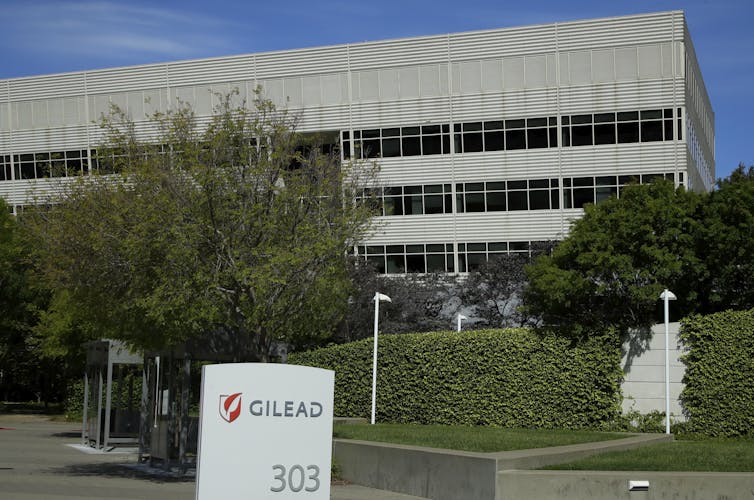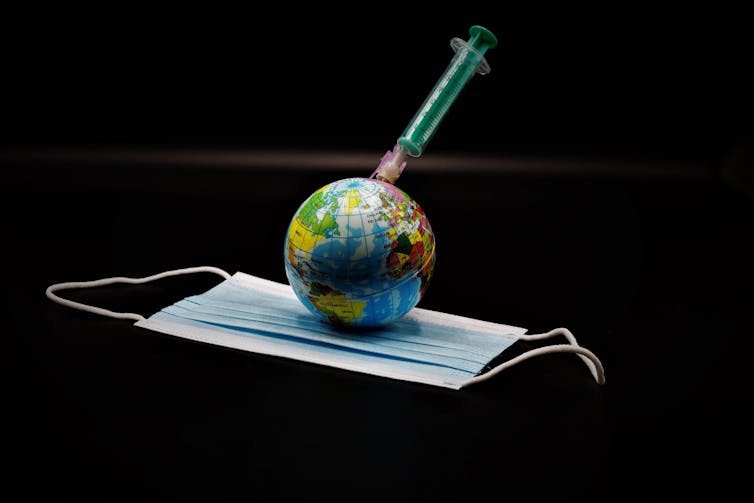At the end of June, the United States government announced that it had secured the entire supply of remdesivir, an antiviral drug that shortens hospital stays for COVID-19 patients, until September.

In March, there were reports that Donald Trump’s administration tried to buy a German company working on a COVID-19 vaccine in order to secure the entire supply for the U.S. A group formed by France, Germany, Italy and the Netherlands struck a deal in the past few weeks to secure 400 million doses of AstraZeneca’s potential vaccine, although other countries are also encouraged to join the group on the same terms. Whether poor countries could afford the terms is another question.
READ MORE: Experts slam U.S. for hoarding world’s supply of remdesivir — only licensed COVID-19 drug
It certainly doesn’t seem that “we’re all in this together” — it’s looking more and more like a dog-eat-dog world. The group that’s most likely to be eaten are those living in low- and middle-income countries (LMICs). Gilead, the maker of remdesivir, has licence agreements with manufacturers to supply remdesivir in 127 LMICs, but those agreements exclude large middle-income countries such as Brazil, China and Mexico.
Vaccine nationalism
Gavi, the Vaccine Alliance, is creating a facility that will enter into advance purchase agreements with pharmaceutical companies guaranteeing the purchase of any eventual vaccines. But this proposal has generated significant global concerns about its impact on equitable access for populations, especially in developing countries. Under the agreement, rich countries will get the first crack at enough vaccine to cover 20 per cent of their population, and only then will poorer countries be guaranteed the vaccine — and only for their highest priority populations.
The Serum Institute of India has entered a licensing agreement with AstraZeneca to acquire one billion doses of AstraZeneca’s potential COVID-19 vaccine for LMICs, with a commitment to provide 400 million doses before the end of 2020. But the terms and conditions of the agreement are unknown, including the price and the number of countries eligible for supply.
South Africa has started a trial of the vaccine being developed by the University of Oxford in partnership with AstraZeneca to try to avoid being left behind in the race to secure a supply. Helen Rees, chairwoman of the South African Health Products Regulatory Authority, said in a briefing: “That debate about vaccine nationalism now is very critical. … There has to be an equitable distribution of vaccines. It cannot be all for some and none for many others.”

Costs, supply and control

Get daily National news
The cost of remdesivir in the U.S. is going to be US$390 per vial, which would amount to US$2,340 per five-day treatment course. It’s estimated that remdesivir could be made for under US$1 a dose, less than a quarter of one per cent of what Gilead will be charging. At Gilead’s price, the company could earn well over US$2 billion in the first year the drug is on sale. The cost will hopefully be much lower in countries that are the recipients of Gilead’s licences, but what about the excluded countries? At this point, no one knows. That includes Canada.

Gilead is in the process of submitting an application for approval of remdesivir to Health Canada and, according to Health Canada, the review will be conducted under expedited timelines due to the seriousness of COVID-19. Of course, under the new deal between the U.S. and Gilead, there won’t be any remdesivir for Canada to buy until the end of September. Canada could issue a compulsory licence to allow generic companies to make remdesivir, but currently that authority expires at the end of September so we may be stuck with Gilead as the only supplier.
Gilead controls the supply of remdesivir because it holds the patent on the drug. When Jonas Salk, the inventor of the polio vaccine, was asked if he was going to patent it, his famous response was: “There is no patent, could you patent the sun?” In other words, the vaccine was a public good meant to be used by everyone.
Gilead obviously doesn’t hold the same view about remdesivir, despite the fact that U.S. taxpayers contributed at least US$70.5 million to development of the drug.
READ MORE: The race for a vaccine — China leads the way in a potential coronavirus treatment
Canada’s role
What should Canada be doing about all of this? How is the federal government going to ensure that Canadians have access to COVID-19 treatments and vaccines?
Right now, we don’t have the capability to manufacture a vaccine in the country. Connaught Laboratories, which was instrumental in helping to develop the polio vaccine, used to be able to make vaccines, but it was sold off by the federal government back in 1989 to a French firm.

The federal government should be looking at setting up a Crown corporation to ensure a domestic supply of critical drugs and vaccines at reasonable prices. Until that can be done, the government should extend the compulsory licensing provision in its emergency legislation so that generic companies can be allowed to make future patented therapies at lower costs.
But Canada needs to do much more. When Prime Minister Justin Trudeau was first elected back in 2015, he proclaimed that “Canada is back” in international relations. Despite this promise, Canada has yet to commit to ensuring that any COVID-19 research that is done with Canadian money has to guarantee that products will be available at affordable prices in low- and middle-income countries.
Canada has not signed on to the recently established COVID-19 technology access pool being sponsored by the World Health Organization that is designed to help ensure that COVID-19 health technology-related knowledge, intellectual property and data is voluntarily shared.
Canada is not back; it’s missing in action both domestically and internationally.Joel Lexchin, Professor Emeritus of Health Policy and Management, York University, Emergency Physician at University Health Network, Associate Professor of Family and Community Medicine, University of Toronto
This article is republished from The Conversation under a Creative Commons license. Read the original article.







Comments